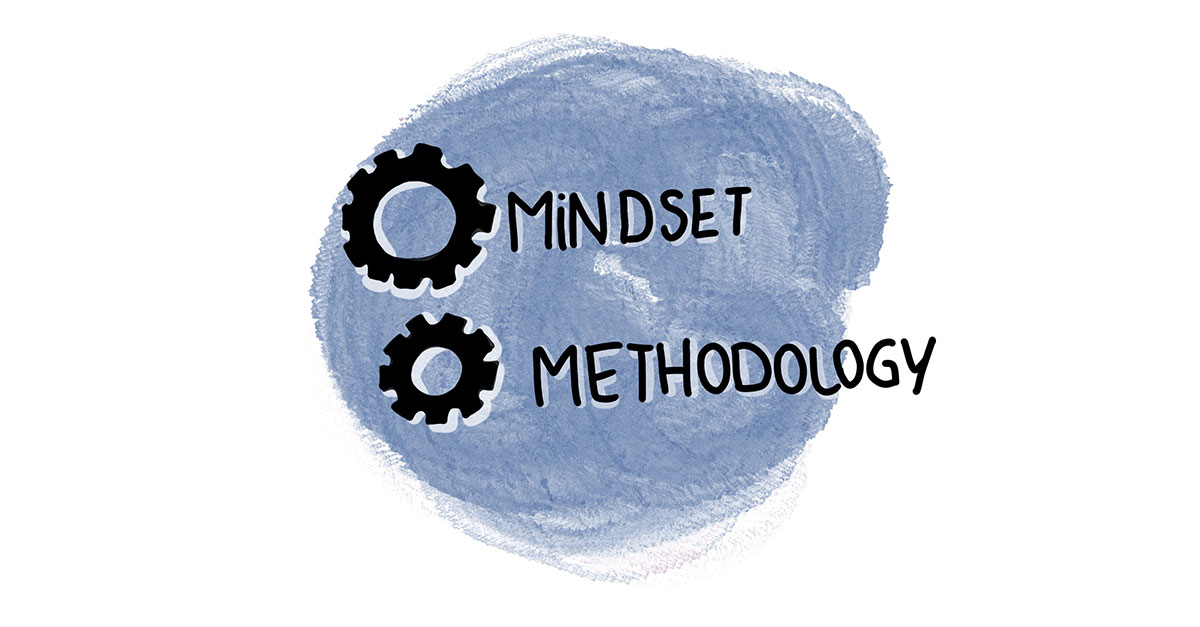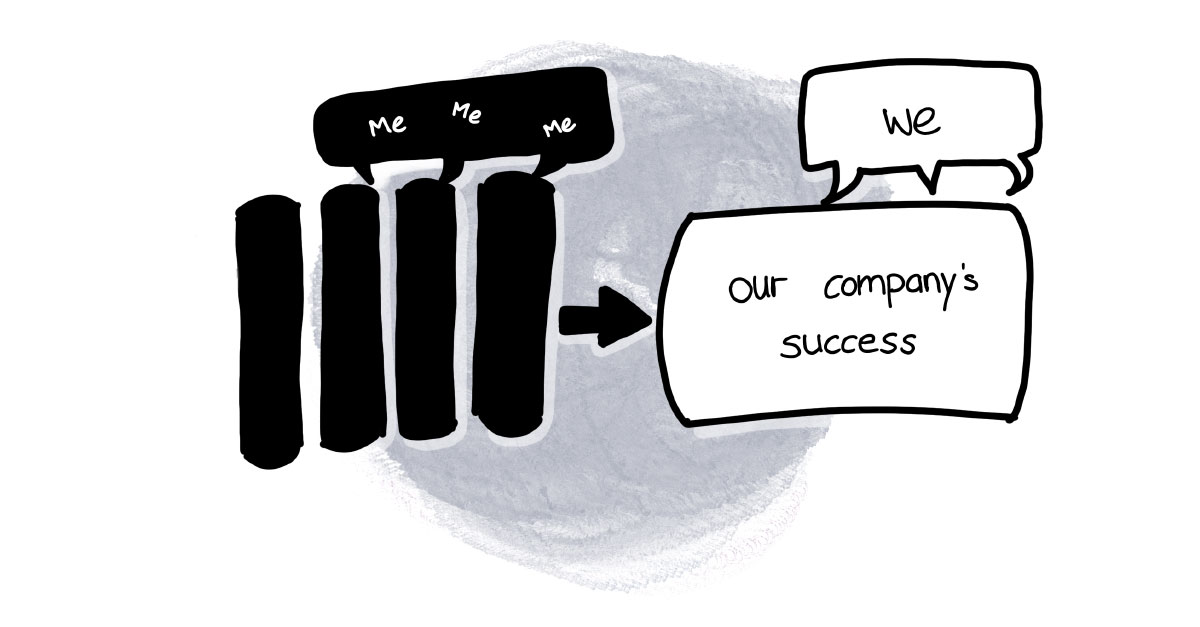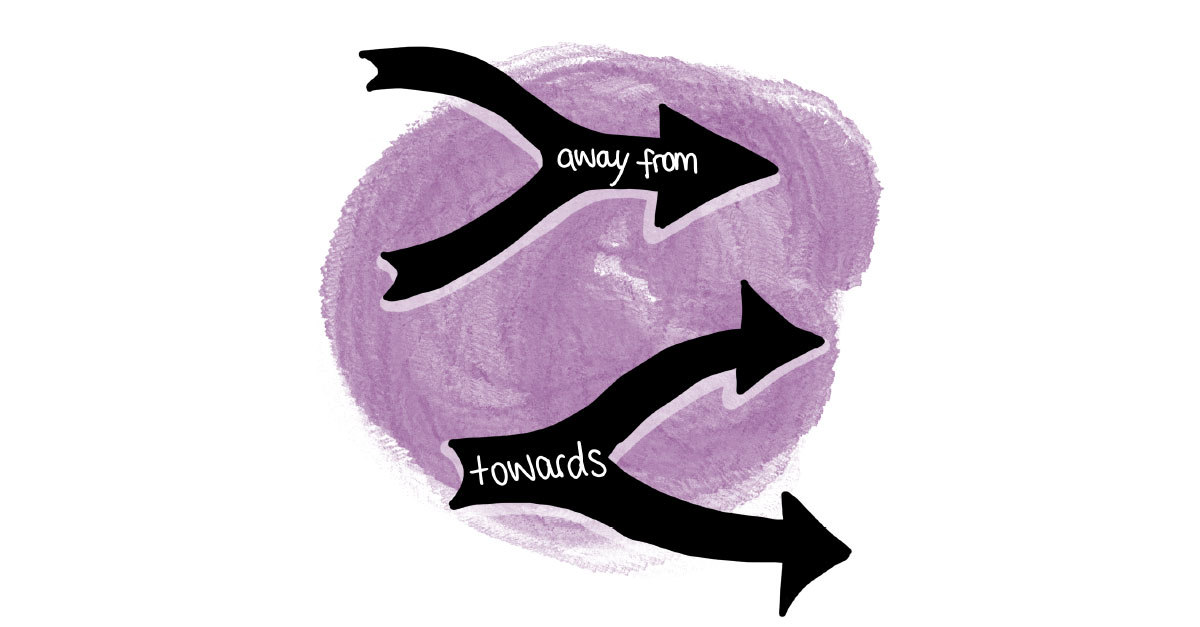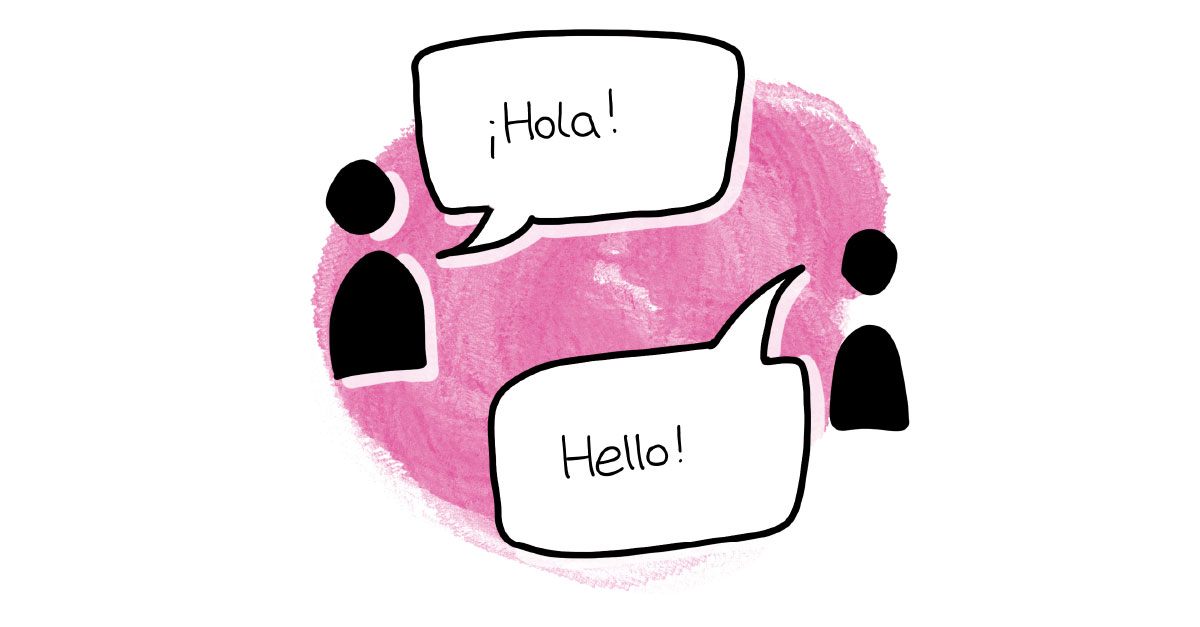Does all this seem Spanish to me? – An interview with Stella Büchele and Alexander Badini on the topic of Lean Portfolio Management and the answer to the question of what speaking Spanish has to do with the introduction of LPM.
Hello Stella, hello Alex! It’s great that we have found each other today. I am curious to hear what you two, as experts in LPM and agility, have to say about this. In detail, today we are talking about the introduction of Lean Portfolio Management in organizations. Alex, what do you see as the particular challenges here?
Alexander Badini: Well, LPM starts at the top. In the introduction of agile working at strategy level. And as we all know, it’s all about the two famous “Ms”. One is the methodology, but even more important is the mindset. From my many years of experience, I can say that the maturity level at team level is often quite good in many companies. Scrum, as an example of agile working in development teams, is established here. If we now scale from the individual team level to the program level with many teams, so-called “Agile Release Trains” according to SAFe, this often works very well. If we scale further, however, we will eventually move to portfolio level. This means that I now intervene with an LPM approach in many established processes, decision-making structures and responsibilities. And since this is exactly how the entire company, from the project manager to the top management, is affected by the transformation, we have arrived at the topic of corporate culture and mindset.

What do you think Stella needs to take into account when it comes to intervening in corporate culture? Or what does the reality of your client projects look like?
Stella Büchele: In my experience, corporate cultures are still strongly silo-oriented, especially in large corporations. The different departments and divisions are managed and often remunerated strictly according to their individual goals. Conflicts of objectives between the divisions are not uncommon. The LPM approach contradicts precisely this “me”-centric silo approach. Even more: LPM forces that the overall goal is much more important than the individual silos and their individual goals. LPM is about agreeing on the best possible portfolio across all silos.
For this to happen, priorities must be set across all departments and personal interests should be subordinated to the overriding interests of the company. In theory, all departments should have only one priority anyway: The best possible corporate success and the securing of strategic goals.
And in reality, it often looks different?
Stella Büchele: Not always and not everywhere, but the change of perspective from the “I” to the “we” or from the silo to an overall entrepreneurial perspective is often difficult. In most cases, the people concerned do not even act selfishly or with bad intentions but have simply been socialised to this way of thinking for years, sometimes decades. The goal of LPM is to control less and talk more, to decide collectively, to support each other and, with limited budgets and resources, to give priority to the issues with the greatest impact – regardless of whether they are one’s own issues or not. You remember the second M? Mindset is the magic word here.

So far understood. And how is such an LPM project successfully introduced?
Alexander Badini: So, first of all: Introducing LPM in a company and then thinking that all problems will be solved overnight can only fail. Above all, cultural change takes time. And every company has its own individual prerequisites and challenges. This is exactly why we at P3 rely on an evolutionary rather than a revolutionary approach. Revolutionary would mean turning the organizational structure from left to right, dissolving departments and establishing product or process-oriented value streams. You don’t have to be a clairvoyant to anticipate the consequences: Uncertainty, fear, rejection. It is very likely that the project would fail before it has really begun.
And what is the evolutionary approach?
Stella Büchele: The evolutionary approach is based primarily on agile principles and relies on continuous and regular delivery as well as limiting work in progress. In the process, initial successes help to establish people’s readiness for the next changes. A step-by-step change enables us to integrate lessons learned and to adjust the course of the transformation if necessary. This is what we are currently doing with our clients. And just so that no misunderstandings arise here: In the context of LPM, the evolutionary approach also requires an incredibly high willingness to change, because as Alexander Badini has already rightly mentioned, everyone from the team to the top management level is affected. And right away: Let go of the wish and the hope that you can automate the process on the basis of tools and outsource decisions to algorithms. These tools support but do not replace interaction. It remains as described by Sutherland and Schwaber in the agile manifesto in 2001: “Individuals and interactions” are more important than “processes and tools”. And then the first and perhaps also the second portfolio conference within an LPM transformation is very likely to be “a mess”. But it is getting better all the time and the feedback from our clients as well as many big and small successes more than prove us right.
It is therefore a matter of being clear about the big common goal and realising that the best possible solution can only be found cooperatively. But what if this will to use LPM for change is not yet there? How can resistance and reluctance in the organisation be solved?
Alexander Badini: Well, there are two main drives to change. One drive is “away from”. That is, I don’t want to have something anymore. For example, in IT I don’t want to have a huge bow wave of projects in front of me anymore, tearing timelines and running from one fire to the next fire. The second drive that makes me want to change is the “towards”. At LPM, the “away from” drive needs to be more pronounced, in my view. Because as I described at the beginning, Agile is already very well established at the team level, but there is still room for improvement at the top management level. And that is also the big “mistake” or challenge of SAFe: you use a completely new language. Suddenly we are talking about Epics, Value Streams or Participatory Budgeting. For most people, these are completely new terms that first have to be explained. Both on the content level and on the linguistic level. That’s why LPM seems Spanish to many people at first – in both senses of the word.
I never thought of it that way before. So, an LPM transformation is like learning a new language? Interesting.
Alexander Badini: Absolutely. That is why an essential point in an LPM transformation is not only to establish the technical methodological background, but also the new language. This usually takes a lot of time, training and persuasion. We do not usually have this time in abundance. This is precisely why the drive chosen by P3 to introduce LPM is not primarily “towards”, but “away from”. Because the problems, imbalances and grievances that exist in the company are known to all, are understood by all and have been experienced hundreds of times. So, it doesn’t matter whether we call it Epic or not. Our focus is on solving our clients’ pain points. The “away from”. Away from “resource bottlenecks”, away from “intransparency”, away from silo thinking and departmental egoism. This is our fuel in an LPM transformation.

SAFe and its terminology is therefore the means but not the end, right?
Stella Büchele: Yes, that sums it up very well. You have to convince people, especially middle and top management, who have never heard of agility. Learning a new methodology and a new language always costs a lot of energy. It is not uncommon to lose motivation in the process. It would also seem strange to me if someone came around the corner and said to me, “Let’s start again and I’ll explain the world to you”. Change takes time. And just like in language lessons, a SAFe transformation needs empathy, a cautious and step-by-step approach and, above all, no agile dogmatism. Because every method or framework, including Lean Portfolio Management, still serves people and not the other way around.
Great, thank you Alexander and thank you Stella for the exciting conversation and the look behind the scenes of an LPM transformation. With this in mind: sigue siendo emocionante y hasta pronto!





